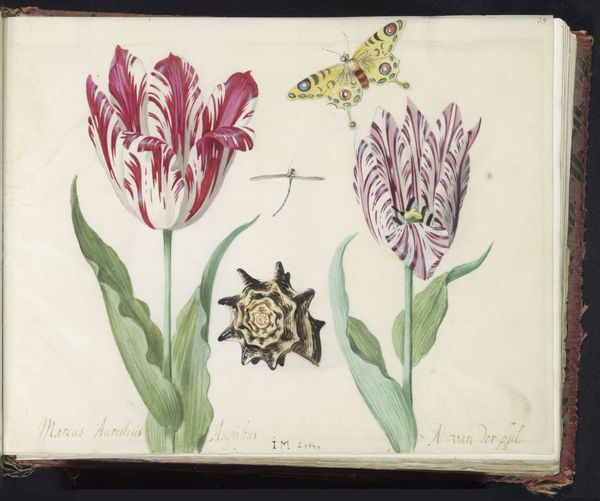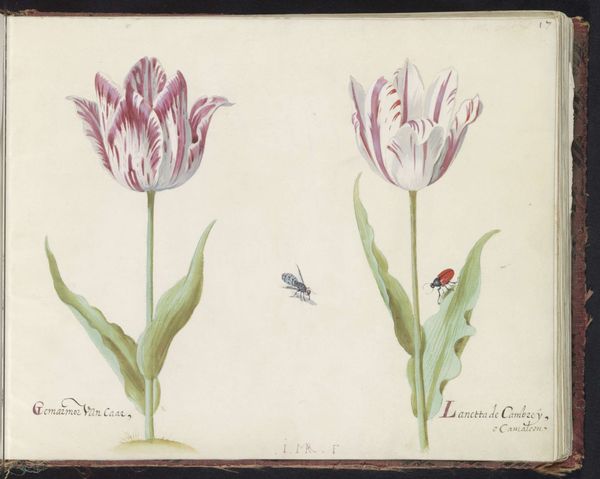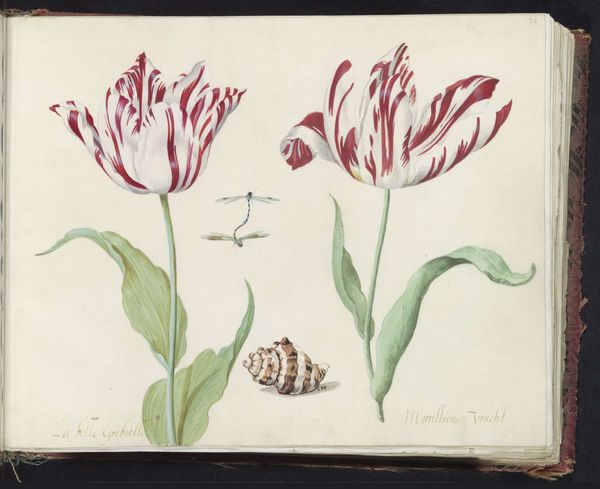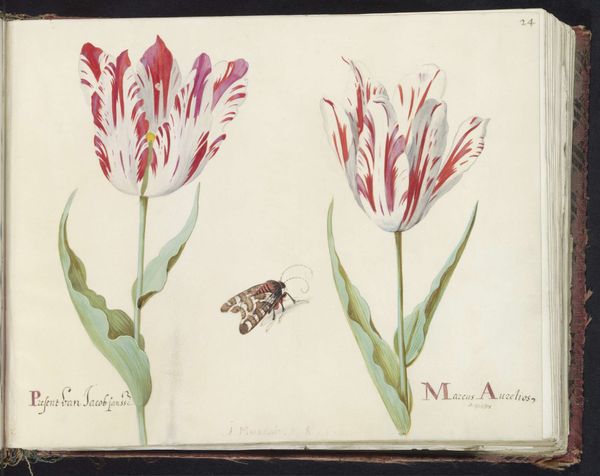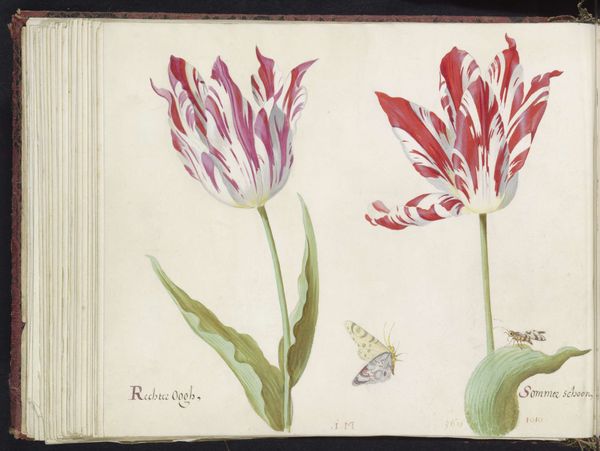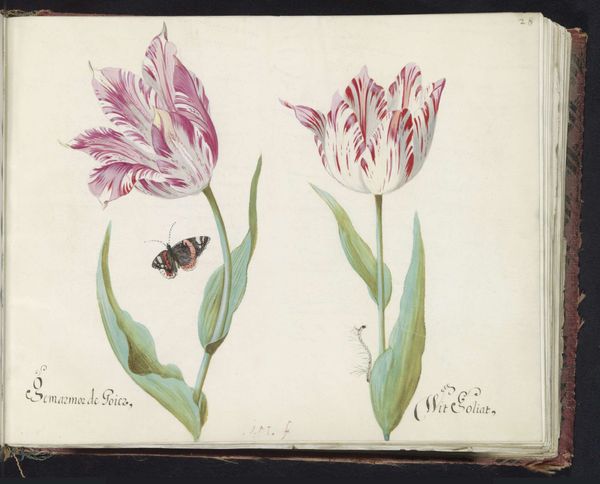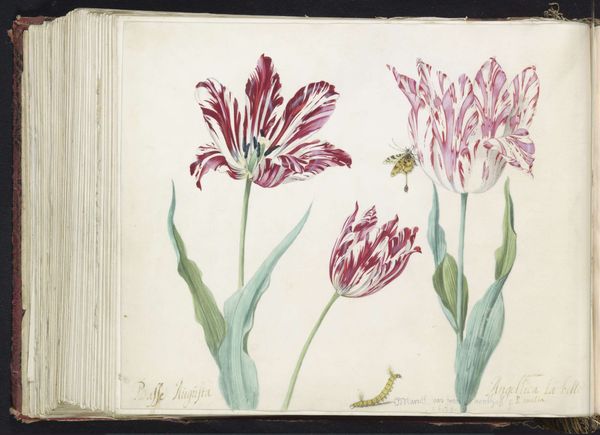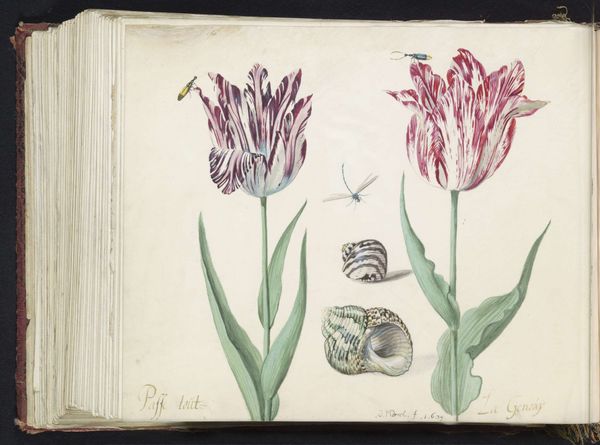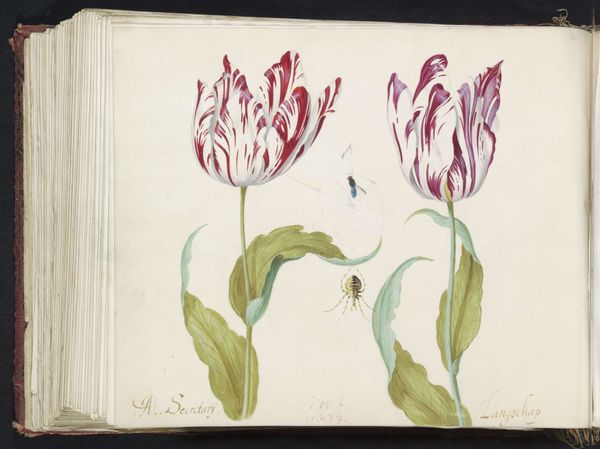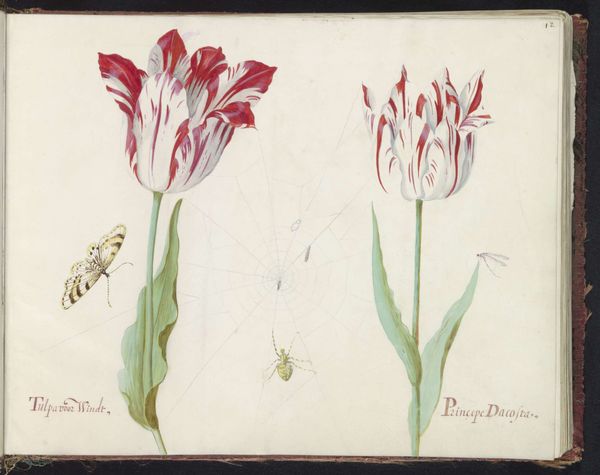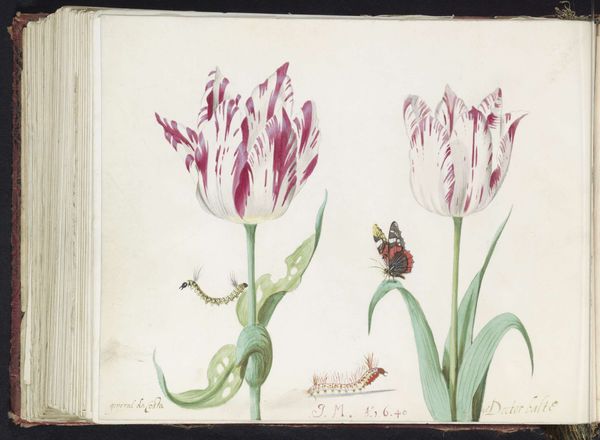
drawing, tempera, watercolor
#
drawing
#
tempera
#
dutch-golden-age
#
watercolor
#
coloured pencil
#
watercolour illustration
#
genre-painting
#
botanical art
Dimensions: height 265 mm, width 335 mm
Copyright: Rijks Museum: Open Domain
Curator: Here we have Jacob Marrel's "Two Tulips with Cricket, Snail and Butterfly", a watercolor and tempera piece dating back to 1640. It resides here at the Rijksmuseum. Editor: It's surprisingly vibrant for its age. There's something fragile and ephemeral about it too, like a moment captured between seasons. Curator: Dutch Golden Age botanical art served many functions beyond mere decoration. Remember the Dutch passion for tulips—tulip mania had gripped the nation. Paintings like this served almost as catalogs, documenting varieties. These meticulously detailed renderings elevated certain species. Editor: Elevating is an understatement. I'd argue that tulips were a form of currency, accessible mostly to privileged, white, straight, cisgendered males. It raises questions about access, the power structures determining worth, doesn’t it? Who gets to possess and celebrate beauty? Curator: I agree that it hints at societal stratification of that era. Art also often reflects wealth, of course, especially with rare species. Note the incredible details: the velvety texture of the petals, the intricate wings of the butterfly, even the slime trail of the snail. The level of skill on display here… it was very prized! Editor: It’s also unsettling. The presence of insects—a cricket and snail as well, feels deliberate. Are we to think about mortality? Nature's resilience against human intervention perhaps? What do those creatures say about our relationship with the natural world? Curator: It introduces a narrative element, beyond pure scientific cataloging. There is tension: the tulips symbolize beauty and prosperity but are surrounded by a suggestion of nature's other cycles, cycles of decay. Editor: That is such an interesting point. Decay is part of life. By bringing those elements into the rendering, perhaps Marrel sought to democratize access to conversations. What does beauty mean if it cannot last? Curator: That’s something to contemplate, the tulip's symbolism coupled with natural life cycle of each subject. A compelling discussion for us to end on! Editor: Indeed. It urges us to acknowledge beauty's fleeting essence and the systemic forces shaping our perceptions. I agree. Thank you.
Comments
No comments
Be the first to comment and join the conversation on the ultimate creative platform.
